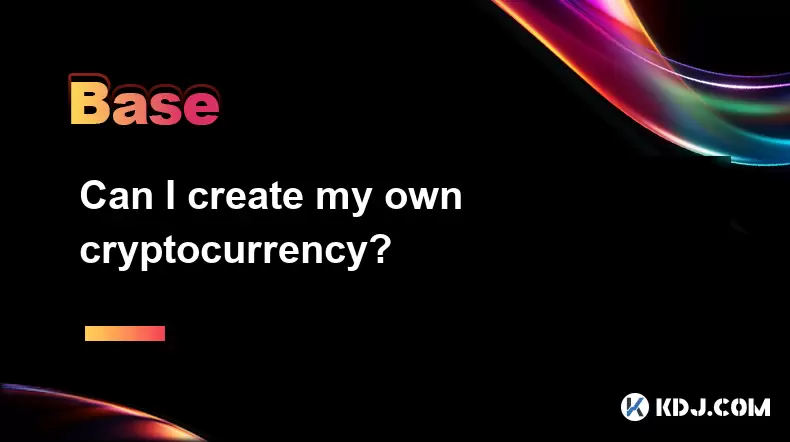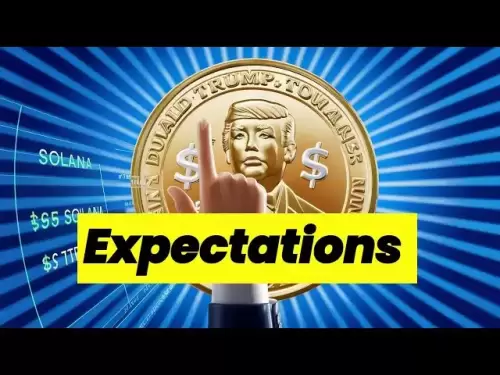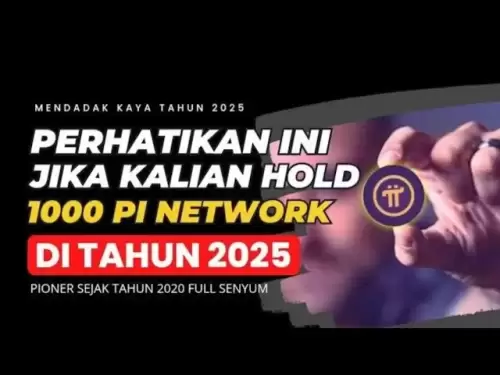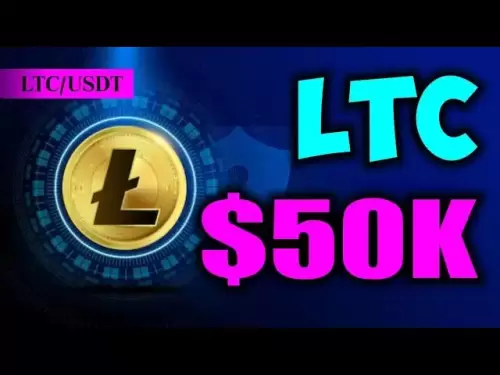-
 Bitcoin
Bitcoin $118200
0.13% -
 Ethereum
Ethereum $3747
4.69% -
 XRP
XRP $3.515
2.31% -
 Tether USDt
Tether USDt $1.000
-0.02% -
 BNB
BNB $753.8
2.58% -
 Solana
Solana $181.7
2.19% -
 USDC
USDC $0.9997
-0.01% -
 Dogecoin
Dogecoin $0.2714
12.11% -
 Cardano
Cardano $0.8700
4.49% -
 TRON
TRON $0.3170
-1.09% -
 Hyperliquid
Hyperliquid $46.67
3.75% -
 Stellar
Stellar $0.4732
1.93% -
 Sui
Sui $3.937
2.55% -
 Chainlink
Chainlink $19.49
5.52% -
 Hedera
Hedera $0.2777
3.08% -
 Bitcoin Cash
Bitcoin Cash $547.4
5.82% -
 Avalanche
Avalanche $25.23
1.29% -
 Shiba Inu
Shiba Inu $0.00001562
4.48% -
 Litecoin
Litecoin $117.1
4.09% -
 UNUS SED LEO
UNUS SED LEO $8.991
0.15% -
 Toncoin
Toncoin $3.293
2.21% -
 Polkadot
Polkadot $4.517
1.96% -
 Uniswap
Uniswap $10.65
5.08% -
 Ethena USDe
Ethena USDe $1.001
0.00% -
 Monero
Monero $325.1
1.49% -
 Pepe
Pepe $0.00001425
6.78% -
 Bitget Token
Bitget Token $4.962
1.38% -
 Dai
Dai $0.9999
-0.01% -
 Aave
Aave $326.9
3.03% -
 Bittensor
Bittensor $425.7
2.24%
Why is Web3 the future? Detailed explanation of core advantages
Web3 promises a decentralized internet with enhanced security, user control, and new economic models through blockchain technology.
May 31, 2025 at 01:08 pm

The concept of Web3 has gained significant traction within the cryptocurrency and blockchain communities, heralding a new era of internet technology. Web3 represents a decentralized version of the internet, built on blockchain technology, which aims to shift control from centralized entities to users themselves. This shift promises several core advantages that are fundamental to understanding why Web3 is considered the future of the internet.
Decentralization and User Control
One of the most compelling reasons why Web3 is seen as the future is its foundation in decentralization. Unlike the current web, which is dominated by a few large corporations that control vast amounts of user data, Web3 aims to distribute power and control to individual users. This is achieved through the use of blockchain technology, where data is not stored on a single server but across a network of computers.
In a decentralized system, users have greater control over their data and digital assets. They can interact directly with each other without intermediaries, reducing the risk of censorship and enhancing privacy. For instance, in a Web3 environment, social media platforms could be built where users own their content and can monetize it directly, rather than through a centralized platform that takes a significant cut.
Enhanced Security and Privacy
Another critical advantage of Web3 is its potential to offer enhanced security and privacy. Traditional web applications are often vulnerable to data breaches and cyberattacks because they rely on centralized servers. In contrast, Web3 applications leverage the security features inherent in blockchain technology, such as encryption and cryptographic proofs, to safeguard user data.
For example, in a Web3-based messaging app, messages could be encrypted and stored in a decentralized manner, making it much harder for hackers to access them. Moreover, users can control their personal data and choose what information to share with applications, reducing the risk of data misuse by third parties.
Tokenization and New Economic Models
Web3 introduces the concept of tokenization, which allows for the creation of digital assets that can represent anything from real estate to artwork. These tokens can be traded on decentralized exchanges, creating new economic models that were previously impossible.
In a Web3 economy, users can participate in the governance of platforms through token-based voting systems. This means that users who hold tokens have a say in the decision-making processes of the platforms they use, fostering a more democratic and inclusive environment. Additionally, tokenization enables creators to directly monetize their work, bypassing traditional intermediaries and retaining a larger share of the profits.
Interoperability and Seamless Integration
Web3 also promises interoperability between different applications and services. In the current web, different platforms and services often operate in silos, making it difficult for users to move their data and assets between them. Web3, with its decentralized nature, aims to create a more interconnected ecosystem where data and assets can flow freely.
For example, a user could use a single digital wallet to manage their assets across multiple decentralized applications (dApps), without needing to create separate accounts for each service. This seamless integration enhances user experience and opens up new possibilities for innovation and collaboration.
Smart Contracts and Automation
A key component of Web3 is the use of smart contracts, which are self-executing contracts with the terms directly written into code. Smart contracts automate processes that traditionally require intermediaries, such as legal professionals or banks, making transactions faster, cheaper, and more transparent.
For instance, in a Web3-based real estate transaction, a smart contract could automatically transfer ownership once certain conditions are met, eliminating the need for a middleman and reducing the risk of fraud. This automation not only saves time and money but also increases trust among parties involved in the transaction.
Challenges and Considerations
While Web3 offers numerous advantages, it is not without its challenges. Scalability remains a significant issue, as many blockchain networks struggle to handle a large volume of transactions efficiently. Additionally, the complexity of Web3 technologies can be a barrier to adoption for the average user.
Furthermore, regulatory uncertainty poses a challenge to the widespread adoption of Web3. Governments around the world are still grappling with how to regulate decentralized technologies, which could impact their development and use.
Despite these challenges, the core advantages of Web3—decentralization, enhanced security and privacy, tokenization, interoperability, and smart contracts—make a compelling case for why it is considered the future of the internet. As technology continues to evolve and these challenges are addressed, Web3 has the potential to revolutionize how we interact with the digital world.
Frequently Asked Questions
Q: How can someone start using Web3 technologies?
A: To start using Web3 technologies, you can follow these steps:
- Choose a Web3 wallet: Select a reputable wallet like MetaMask or Trust Wallet that supports Web3 functionalities.
- Set up the wallet: Download the wallet app or browser extension, and follow the instructions to set it up. This usually involves creating a new wallet or importing an existing one using a seed phrase.
- Fund your wallet: Purchase cryptocurrency from a trusted exchange and transfer it to your Web3 wallet.
- Explore decentralized applications (dApps): Visit dApp stores or websites like DappRadar to find and interact with Web3 applications.
- Engage with the community: Join Web3 communities on platforms like Discord or Telegram to stay updated and learn more about different projects.
Q: What are some examples of Web3 applications currently in use?
A: Several Web3 applications are already in use, including:
- Decentralized Finance (DeFi) platforms: Applications like Uniswap and Compound allow users to lend, borrow, and trade cryptocurrencies without intermediaries.
- Non-Fungible Token (NFT) marketplaces: Platforms like OpenSea and Rarible enable users to buy, sell, and trade unique digital assets.
- Decentralized social media: Platforms like Steemit and Minds allow users to create and monetize content in a decentralized manner.
- Gaming: Games like Axie Infinity and Decentraland integrate Web3 technologies to allow players to own and trade in-game assets.
Q: How does Web3 impact traditional businesses?
A: Web3 can significantly impact traditional businesses in several ways:
- Disintermediation: By removing intermediaries, Web3 technologies can disrupt industries like finance, real estate, and entertainment, allowing businesses to interact directly with consumers.
- New revenue models: Tokenization and smart contracts enable businesses to create new revenue streams, such as through token-based loyalty programs or decentralized crowdfunding.
- Enhanced transparency and trust: The use of blockchain technology can increase transparency and trust in business operations, particularly in supply chain management and contract enforcement.
- Regulatory challenges: Businesses must navigate the evolving regulatory landscape surrounding Web3 technologies, which can impact their adoption and implementation strategies.
Disclaimer:info@kdj.com
The information provided is not trading advice. kdj.com does not assume any responsibility for any investments made based on the information provided in this article. Cryptocurrencies are highly volatile and it is highly recommended that you invest with caution after thorough research!
If you believe that the content used on this website infringes your copyright, please contact us immediately (info@kdj.com) and we will delete it promptly.
- Crypto & Institutions in July 2025: What's the Hype?
- 2025-07-21 04:30:12
- Pepeto, DOGE, SHIB Prices: What's Hot and What's Not in the Meme Coin Mania
- 2025-07-21 04:30:12
- Bitcoin's Wild Ride: Records, Rallies, and Reversals - A New Yorker's Take
- 2025-07-21 02:30:12
- CoinDCX Hack: $44 Million Lost, User Funds Safe... For Now?
- 2025-07-21 02:30:12
- BONK, FLOKI, Remittix Predictions: Navigating the Meme Coin Mania and Beyond
- 2025-07-21 02:50:13
- Hacker Attack on CoinDCX: Funds Safe, But Lessons Learned
- 2025-07-21 02:50:13
Related knowledge

What is the difference between a sidechain and a Layer 2?
Jul 20,2025 at 11:35pm
Understanding the Concept of SidechainsA sidechain is a separate blockchain that runs parallel to the main blockchain, typically the mainnet of a cryp...

What is the Inter-Blockchain Communication Protocol (IBC)?
Jul 19,2025 at 10:43am
Understanding the Inter-Blockchain Communication Protocol (IBC)The Inter-Blockchain Communication Protocol (IBC) is a cross-chain communication protoc...

How does sharding improve scalability?
Jul 20,2025 at 01:21am
Understanding Sharding in BlockchainSharding is a database partitioning technique that is increasingly being adopted in blockchain technology to enhan...

What is the "crypto trilemma" of scalability, security, and decentralization?
Jul 19,2025 at 06:28pm
Understanding the Concept of the Crypto TrilemmaThe crypto trilemma refers to the challenge of simultaneously achieving scalability, security, and dec...

What is a cliff and vesting schedule in tokenomics?
Jul 20,2025 at 10:28am
What Does a Cliff Mean in Tokenomics?In tokenomics, a cliff refers to a specific period during which token holders are not allowed to access or transf...

Can I create my own cryptocurrency?
Jul 20,2025 at 11:49pm
Understanding the Basics of Creating a CryptocurrencyYes, you can create your own cryptocurrency, but it involves a combination of technical knowledge...

What is the difference between a sidechain and a Layer 2?
Jul 20,2025 at 11:35pm
Understanding the Concept of SidechainsA sidechain is a separate blockchain that runs parallel to the main blockchain, typically the mainnet of a cryp...

What is the Inter-Blockchain Communication Protocol (IBC)?
Jul 19,2025 at 10:43am
Understanding the Inter-Blockchain Communication Protocol (IBC)The Inter-Blockchain Communication Protocol (IBC) is a cross-chain communication protoc...

How does sharding improve scalability?
Jul 20,2025 at 01:21am
Understanding Sharding in BlockchainSharding is a database partitioning technique that is increasingly being adopted in blockchain technology to enhan...

What is the "crypto trilemma" of scalability, security, and decentralization?
Jul 19,2025 at 06:28pm
Understanding the Concept of the Crypto TrilemmaThe crypto trilemma refers to the challenge of simultaneously achieving scalability, security, and dec...

What is a cliff and vesting schedule in tokenomics?
Jul 20,2025 at 10:28am
What Does a Cliff Mean in Tokenomics?In tokenomics, a cliff refers to a specific period during which token holders are not allowed to access or transf...

Can I create my own cryptocurrency?
Jul 20,2025 at 11:49pm
Understanding the Basics of Creating a CryptocurrencyYes, you can create your own cryptocurrency, but it involves a combination of technical knowledge...
See all articles

























































































